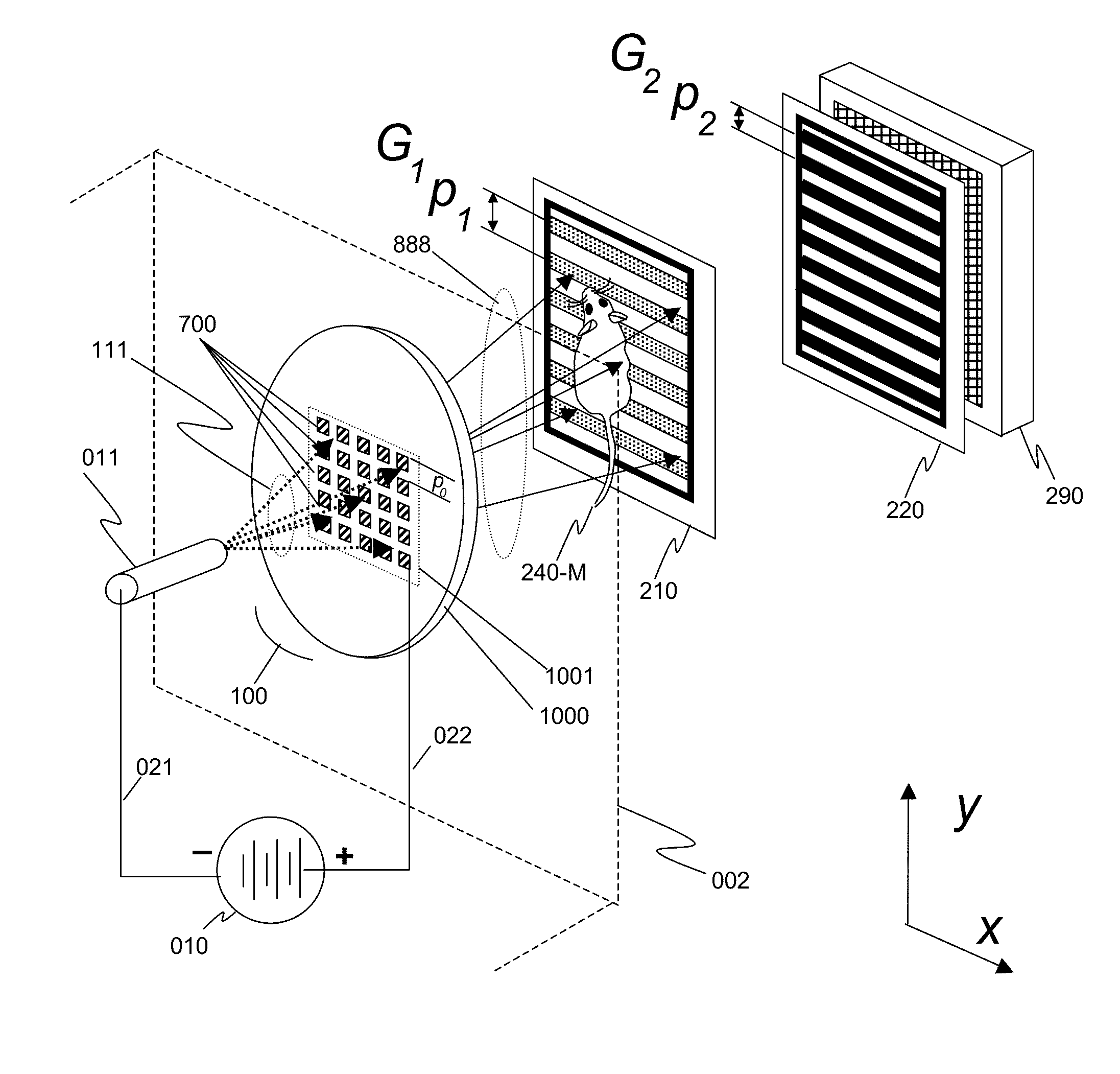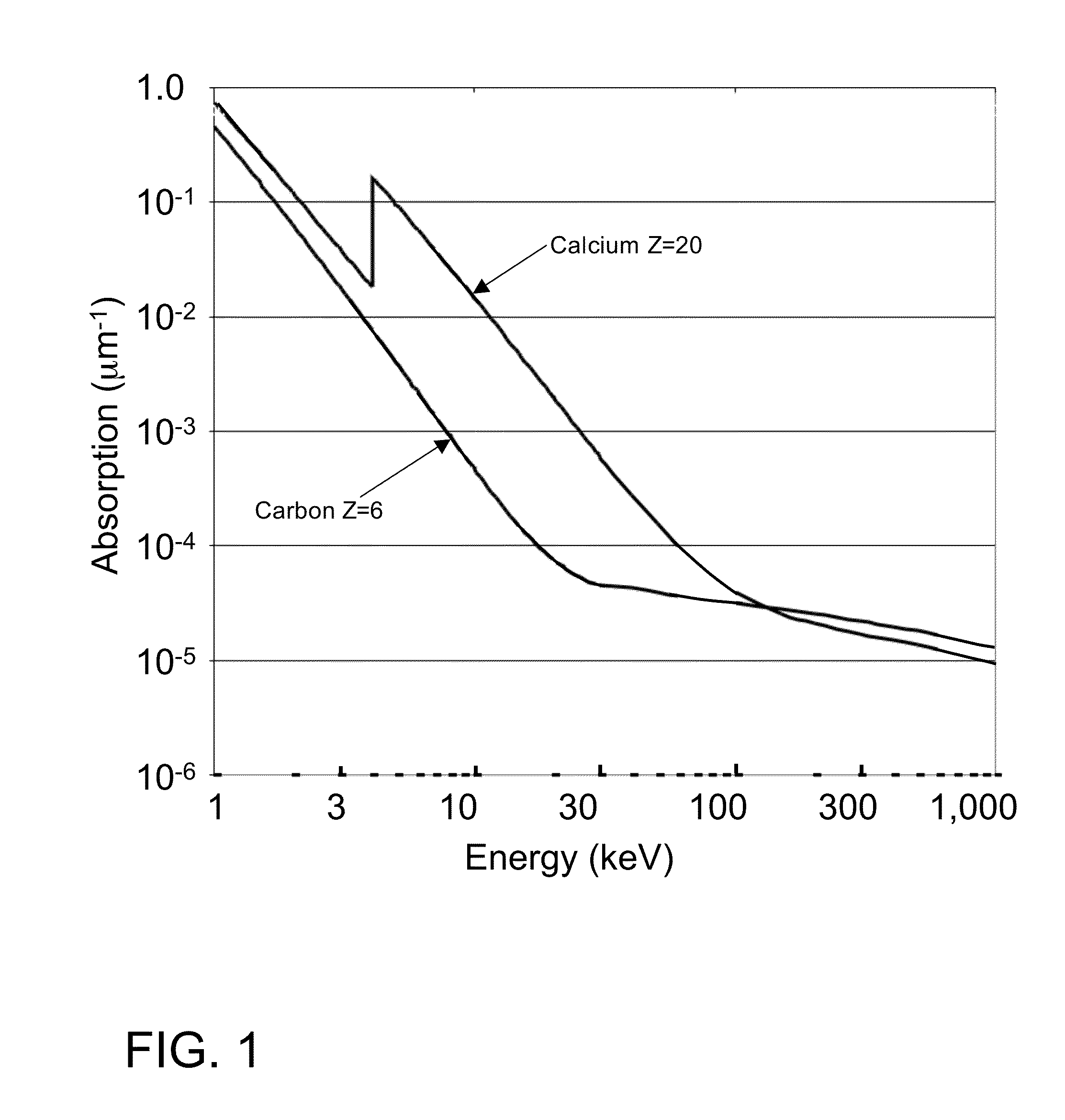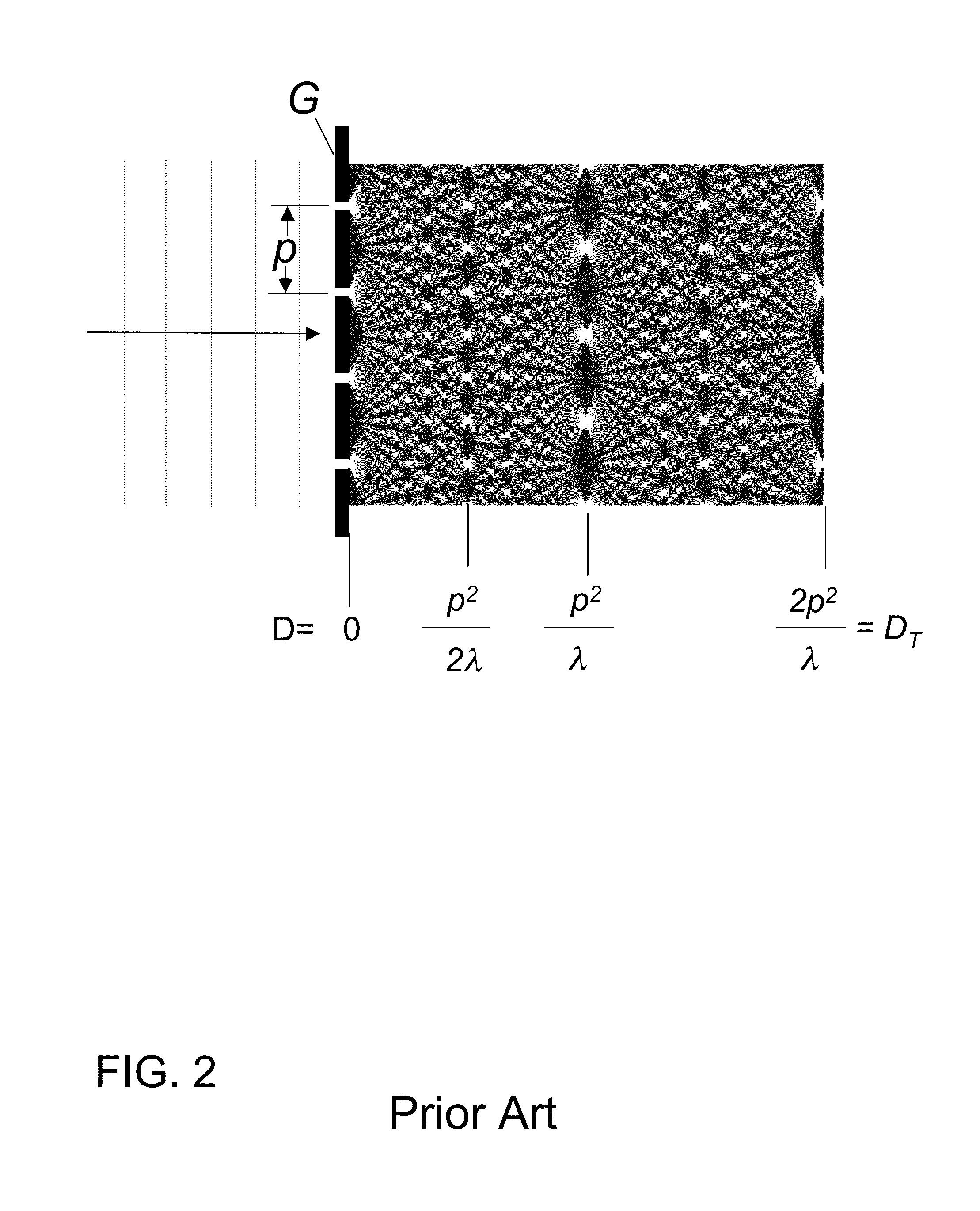X-ray interferometric imaging system
a technology of interferometry and imaging system, which is applied in the direction of instruments, patient positioning for diagnostics, and application, can solve the problems of difficult unambiguous detection of tumors or anomalous tissue, difficult x-ray power, and simple absorption contrast imaging, and achieves high thermal conductivity, high x-ray brightness, and large x-ray power.
- Summary
- Abstract
- Description
- Claims
- Application Information
AI Technical Summary
Benefits of technology
Problems solved by technology
Method used
Image
Examples
Embodiment Construction
1. Descriptions of Various Embodiments of the Invention
[0083]One embodiment of the invention disclosed herein is an x-ray phase-contrast imaging (XPCI) system as illustrated in FIG. 9. The system bears some similarity to the prior art Talbot-Lau interferometer, in that it comprises a beam splitting grating G1 210 of period p1 that establishes a Talbot interference pattern, and an x-ray detector 290 typically comprising an array of sensors to convert two-dimensional x-ray intensities into electronic signals. The beam splitting grating G1 210 may be a phase grating or a transmission grating, and may comprise 1-D periodic patterns (linear gratings), or may comprise more complex 2-D structures such as a grid that is periodic in two orthogonal directions. The system may also comprise an analyzer grating G2 220 of period p2 that may be placed in front of the detector to form additional interference fringes, such as Moiré fringes. The system may additionally comprise a means 225 to transla...
PUM
 Login to View More
Login to View More Abstract
Description
Claims
Application Information
 Login to View More
Login to View More - R&D
- Intellectual Property
- Life Sciences
- Materials
- Tech Scout
- Unparalleled Data Quality
- Higher Quality Content
- 60% Fewer Hallucinations
Browse by: Latest US Patents, China's latest patents, Technical Efficacy Thesaurus, Application Domain, Technology Topic, Popular Technical Reports.
© 2025 PatSnap. All rights reserved.Legal|Privacy policy|Modern Slavery Act Transparency Statement|Sitemap|About US| Contact US: help@patsnap.com



